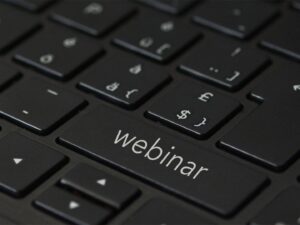Manual Archiving: Bear Legal Compliance in Mind!
We are often asked by customers and interested parties whether our MailStore Server solution for legally compliant email archiving also allows users to manually archive mailboxes. Lars Talaschus, System Engineer at MailStore’s HQ in Viersen, Germany, explains below that MailStore Server offers a flexible combination of manual archiving and centralized journal archiving, how this works without causing incorrect configurations, and what users in the DACH-region need to bear in mind in terms of legal compliance.
When it comes to email archiving, end users often have different requirements than administrators and managers do. While administrators focus on practical benefits, managers are more concerned with the legal aspect; MailStore Server is flexible enough to meet both kinds of requirements.
End users usually organize their emails into folders, collecting all of the emails related to a given process, customer, or project in a single place. Maintaining this folder structure in the archive makes it easy to find archived emails and keeps user acceptance high.
Centralized archiving is advantageous
Most email servers, such as Exchange, MDaemon, IceWarp, and Kerio Connect, enable access to user mailboxes through a service account for archiving purposes, which eliminates the need to know the respective user passwords. As such, mailbox archiving can be centrally managed and carried out without requiring user involvement.
Some of our customers would like users to be able to decide for themselves which emails should be archived, since said users do not need their mailboxes to be completely archived. If you are interested in this kind of setup, you can approve users in MailStore to set up archiving as they please. However, doing so runs the risk of incorrect configuration. Moreover, the workload that decentralized archiving entails is difficult to estimate, since in certain situations a large number of archiving processes need to be carried out at the same time. Handing over archiving power from the administrator to users is therefore inadvisable, since this increases susceptibility to possible operating errors.
Centrally configure individual archiving
If you have an email server that supports service account access to user mailboxes, you can centrally configure individual archiving. You can expand the type of mailbox archiving mentioned above so that only one designated folder and its subfolder are transferred to the archive. The admin can save this setting in the properties of the archiving profile in which the mailbox archiving is configured. Each user then creates a folder in their mailbox and gives it a standardized name provided by the admin, such as ‘Transfer to Archive.’ The user then moves emails or folders that need to be archived into this folder. During the next archiving session, these emails and folders are transferred to the archive, where they remain organized in the same folder structure that the user is accustomed to using. The administrator can determine whether the archived data should be instantly deleted from the mailbox, deleted from the mailbox later on, or not be deleted from the mailbox at all. This approach lets administrators retain control over the archiving process and minimizes the risk of incorrect configuration. Meanwhile, the user is able to decide which emails they would like to have archived using the structure of their choice.
Legislation calls for archive integrity
Administrators and managers in Germany, Austria and Switzerland usually have other reasons than users do for introducing email archiving. The German law stipulate that every email that prepares, conducts, completes, or reverses a business transaction needs to be completely archived and accessible at all times!
When it comes to ensuring a complete archive, there is no getting around using an archive mailbox for archiving. An archive mailbox contains copies of each user’s incoming and outgoing emails – all of them. The Microsoft Exchange archive mailbox feature is known as journaling. Other email servers, such as MDaemon, IceWarp, and Kerio Connect, offer similar features. Archive mailboxes are also known as catch-all or multi-drop mailboxes. This type of archiving involves differentiating between incoming and outgoing emails in the archive. When both centralized archiving and archive mailboxes are in use, users can find two copies of their emails in the archive – thanks to de-duplication, storing both copies does not require twice the amount of storage space. Users will find one copy of a given email in the folder structure that they had chosen, and one copy among the incoming and outgoing emails from the archive mailbox.





